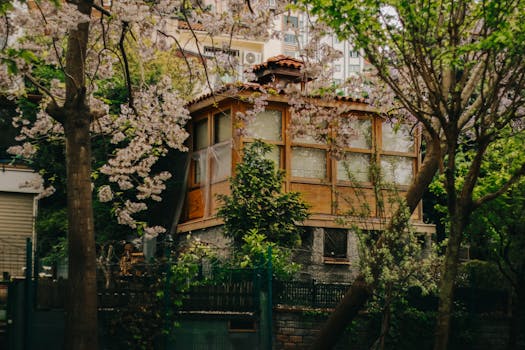
Urban Green Spaces: The Future of Outdoor Living in European Cities by 2025
Urban Green Spaces are becoming increasingly important in European cities as they provide a sustainable and healthy environment for citizens to live, work, and recreate. The focus keyword Urban Green Spaces is at the forefront of this movement, as cities strive to create more green areas and reduce their carbon footprint. By 2025, European cities are expected to have implemented numerous green infrastructure projects, transforming the urban landscape and improving the quality of life for residents.
Introduction to Urban Green Spaces
Urban Green Spaces refer to areas in cities that are dedicated to parks, gardens, green roofs, and other green infrastructure. These spaces provide numerous benefits, including reducing air pollution, mitigating the urban heat island effect, and promoting biodiversity. They also offer opportunities for recreation, socialization, and relaxation, making them an essential component of urban planning.
Benefits of Urban Green Spaces
The benefits of Urban Green Spaces are numerous and well-documented. Some of the most significant advantages include:
- Improved air quality: Urban Green Spaces can reduce air pollution by absorbing pollutants and producing oxygen.
- Reduced urban heat island effect: Green spaces can help to mitigate the urban heat island effect by providing shade and cooling the air through evapotranspiration.
- Increased biodiversity: Urban Green Spaces can provide habitat for a variety of plant and animal species, helping to promote biodiversity in urban areas.
- Recreational opportunities: Green spaces offer opportunities for recreation, socialization, and relaxation, making them an essential component of urban planning.
European Cities Leading the Way
Several European cities are leading the way in creating Urban Green Spaces and promoting sustainability. Some examples include:
- Stockholm, Sweden: Stockholm has implemented a number of green infrastructure projects, including green roofs, green walls, and urban parks.
- Copenhagen, Denmark: Copenhagen has set a goal of becoming carbon neutral by 2025 and is investing heavily in green infrastructure, including green roofs, green walls, and urban parks.
- Barcelona, Spain: Barcelona has implemented a number of green infrastructure projects, including green roofs, green walls, and urban parks, and is also investing in sustainable transportation and energy systems.
Challenges and Opportunities
While Urban Green Spaces offer numerous benefits, there are also challenges and opportunities to consider. Some of the most significant challenges include:
- Funding: Creating and maintaining Urban Green Spaces can be expensive, and funding is often a challenge.
- Space: Finding space for green infrastructure in densely populated cities can be difficult.
- Community engagement: Engaging the community in the planning and maintenance of Urban Green Spaces is essential, but can be challenging.
Despite these challenges, there are also opportunities for innovation and growth. Some of the most significant opportunities include:
- Green infrastructure: Investing in green infrastructure, such as green roofs, green walls, and urban parks, can help to reduce the urban heat island effect and improve air quality.
- Sustainable transportation: Investing in sustainable transportation systems, such as bike-sharing and electric vehicles, can help to reduce air pollution and promote sustainability.
- Community engagement: Engaging the community in the planning and maintenance of Urban Green Spaces can help to promote social cohesion and community pride.
Conclusion
Urban Green Spaces are becoming increasingly important in European cities as they provide a sustainable and healthy environment for citizens to live, work, and recreate. By 2025, European cities are expected to have implemented numerous green infrastructure projects, transforming the urban landscape and improving the quality of life for residents. As we move forward, it is essential to address the challenges and opportunities associated with Urban Green Spaces, and to continue to innovate and invest in sustainable infrastructure.





